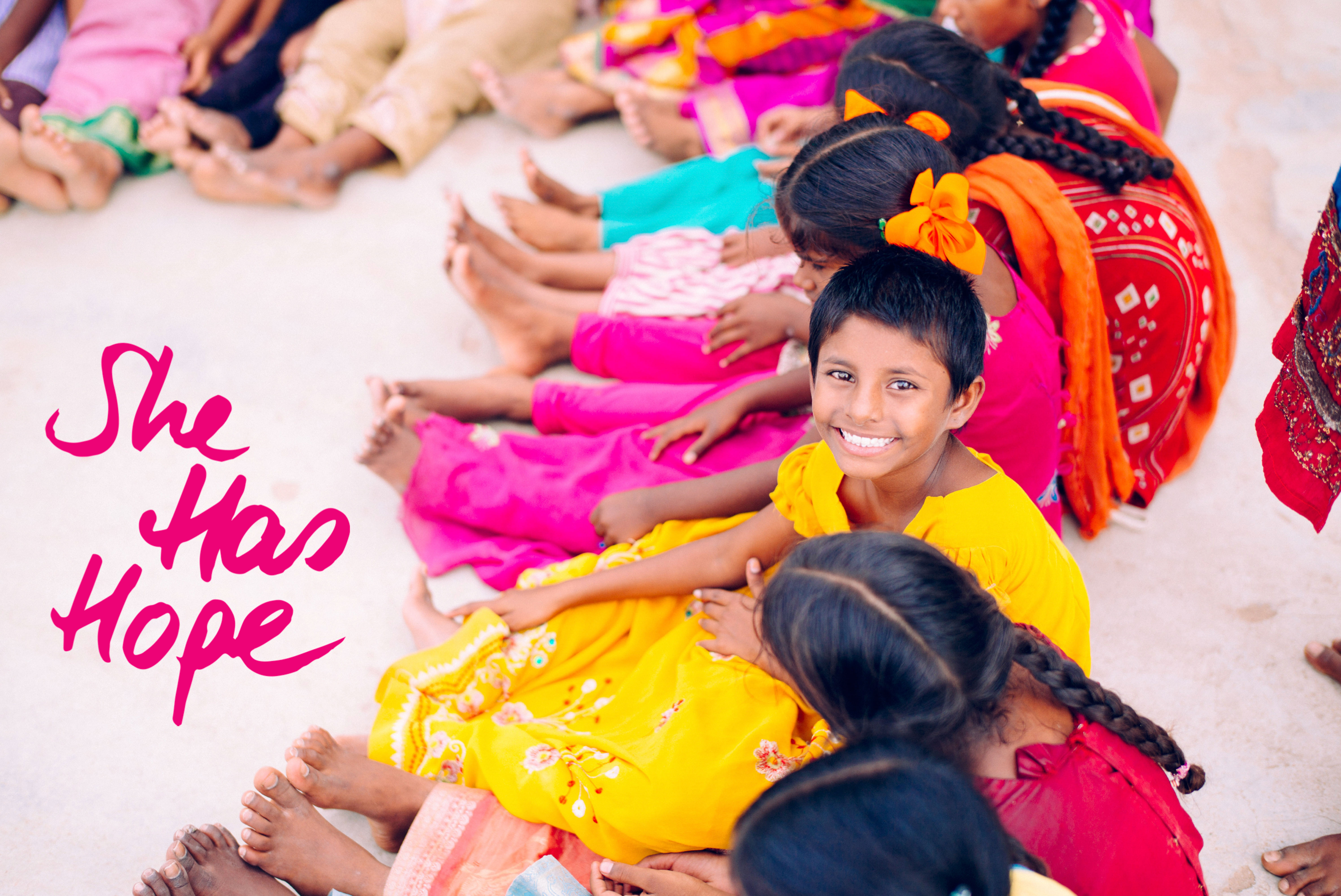Photo: In India, our programs provide security, rehabilitation, nutrition, and accredited education to orphan girls recovering from slavery or child labor situations.
Our Founder & Director, Kirby Trapolino, was recently interviewed by the Texas Asia Society about the origins and history of She Has Hope and the stories behind the pieces our program participants create.
How did the project in India rescuing orphaned slavery survivors evolve into what She Has Hope is today?
After we had been working in India for 15 years we started to become more widely known, gathering a good base of support from around the US. During that time we started to meet more and more people with a like-minded passion to respond to the human trafficking crisis. We would meet people who would say, “Hey I was traveling in Uganda and I struck up a friendship with a local charity leader who is doing something similar to your project in India, could you email him and lend some advice?” And it was around that timeframe of 2008-2009 we started to find ourselves with a few of these kinds of connections, and the lending of advice led to friendships, which led to site visits, which led to us funding their projects and founding new partnerships.
So in addition to India, we’ve now been working in Nepal, Myanmar, Uganda, and the Philippines for about the past 11-12 years. We were able to take lessons learned over those first 15 years in India and apply them to our newer projects, and now some of the experiences we’re learning in these newer projects we’re taking and applying to improvements in India. Full circle!
Is there a particular reason why all of the Impact Products are mostly jewelry?
There is no particular reason but these items we’re featuring are generally our best sellers at local pop-up shops around Houston, including the markets we’ve participated in at AsiaFest.
How has the spread of COVID-19 impacted the way She Has Hope functions?
In most of our programs, we’ve been able to continue basic services for our trafficking survivors, resident orphans, and students. Our 9 schools and education centers are operating on a limited basis of course, but are at least providing meal service or food delivery for program beneficiaries.
All five of the countries where we work are experiencing prolonged lockdown situations but we are slowly starting to see some of the restrictions eased. Nepal is probably seeing the best improvement on easing of lockdowns, but it’s still quite restricted. In India, our boarding school is closed and residents have gone back to live with family while awaiting the school to reopen.
In the meantime, we’ve also been conducting C-19 relief programs, delivering over 41 tons of food stocks to community members who are struggling to find food due to the effects of extreme lockdowns.
Including daily meals served to our orphans and trafficking survivors, along with COVID-19 relief recipients, our kitchens have produced over 180,000 fresh meals for these in need since April 1st.

How would you describe the Impact Products to someone who is not familiar with She Has Hope?
Our impact products are top sellers to which we’ve equated a defined charitable impact that occurs upon purchase. For example, the purchase of the Gabby necklace ($45) provides enough funding to cover the artisan’s living expenses at her rehabilitation home for 5 days.
What are the stories behind some of the pieces? Are the pieces named after particular women?
Right now we are featuring products from our Nepal, Philippines, and Uganda programs. In Nepal, the pieces are made by young trafficking survivor artisans at our Kathmandu rehabilitation home and trade school program as they are becoming certified in tailoring and jewelry making skills. The same is true with our Uganda pieces for our Kampala, Uganda program. For our Philippines program, our artisans are not trafficking survivors but they are widows, single mothers, or otherwise extremely impoverished mothers. The proceeds from the sale of their very popular wine tote design go to helping their financial stability and supporting their daughters’ educations.
The pieces are actually named after founding members of our advisory board to recognize them for their invaluable effort to help us launch She Has Hope into what it has become today.
What is a goal you hope to accomplish in the future with She Has Hope? How do you want to expand this organization?
We hope to expand our high schools and trade schools to equip more survivors with the skills and knowledge they need to live sustainable and financially independent lives. Right now we have two trade schools and two boarding schools and we’ve just broken ground on a new 344-seat technical college in India.
Our India technical college will incorporate a venture philanthropy model whereby 15% of the seats will be on scholarship for trafficking survivors and orphans who have graduated from our high school program, covered by profits from the other 85% paid seats at the college. We hope to see this kind of sustainable venture as the future of our charitable model.
Take Action: sign up for a monthly donation to help sustain our programs | donate your virtual spare change to make real change — register with our RoundUp account
Take a Closer Look: view more photos from this project and others


